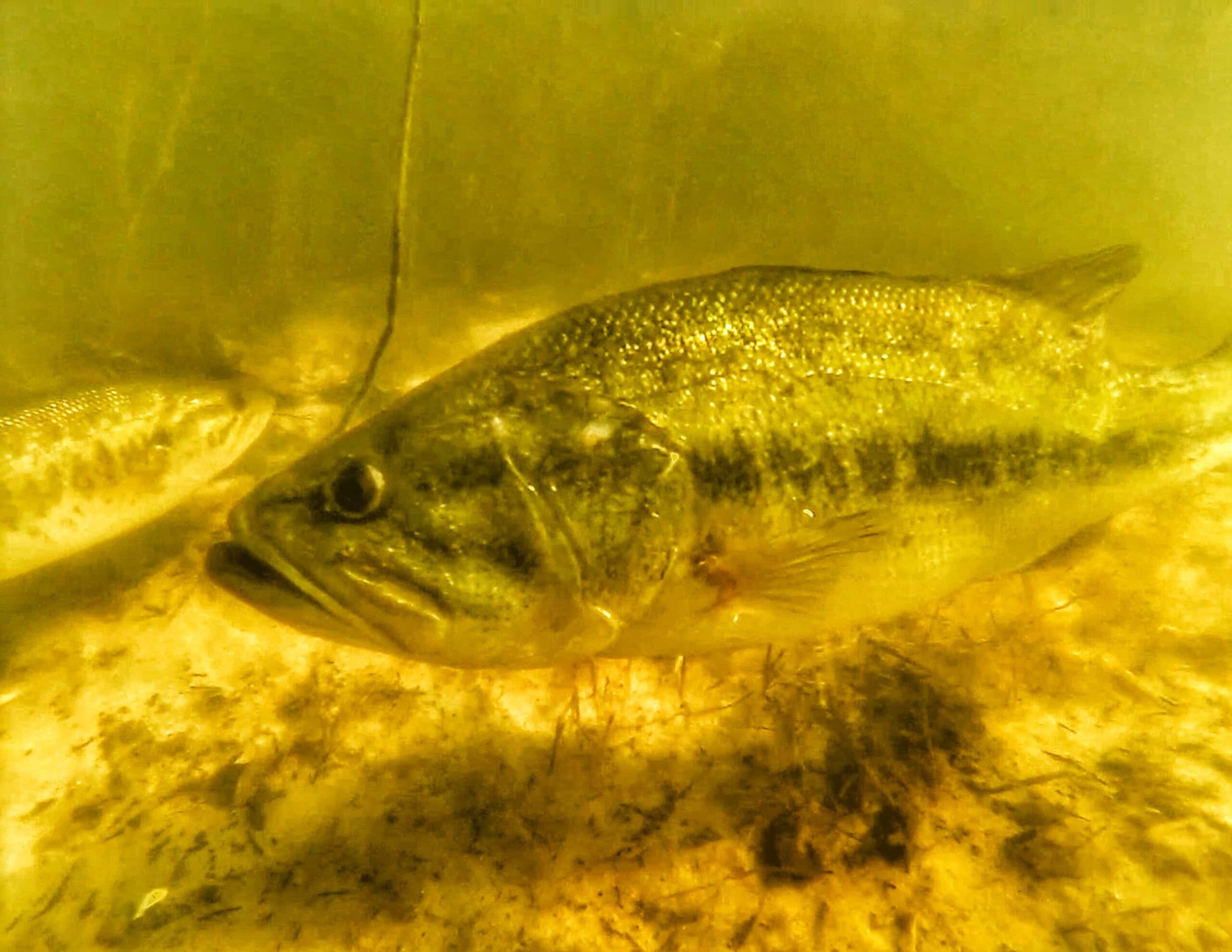POST SPAWN BASS
After covering most of the post spawn fish, let’s finish with Smallmouth and Largemouth Bass. Once female Smallmouth spawn, they will move away from the nesting area, but won’t move too far from these nests at first. The male Smallmouth that built the nest, will remain on the bed to protect the site and the fry until they start to leave. The females will head to deeper water closest to the spawning area, which could be shoreline points, the first drop off or new vegetation. Here’s one thing to remember if you’re fishing for post spawn Smallies. Not all Smallmouth Bass spawn at the same time, so once you start catching them, the bite can last a few weeks in that location. Then the bigger females will use migration routes (BUT STOPPING ALONG THE WAY) to their summer locations. By now the male Smallmouth are off the beds and the bigger males usually move to the deeper water where the females were, but if food is available small males and even small females can stay shallow to dine on baitfish and even the fry the males were protecting. If your lake has crayfish, another spot I would check, would be rocky areas near the spawning beds. Then bays/coves on the north end of the lake can be a good location. Try the first drop off at the mouth of the bay, main points and/or newest weeds in the deepest part of the bay. As the water warms, I think fishing the ledges of old river/creek channels and secondary drop offs could produce some Smallies too. Small soft plastics, spinnerbaits, small crankbaits and live rigs will all work.
Now for Largemouth Bass. Spawning is similar between Smallmouth and Largemouth Bass with females leaving the spawning area and the males protecting the nest and fry, but the only big difference is Largemouth pretty much spawn at the same time. So, fishing for Largemouth during this period can just shut down. That said, all post spawn fish need to recover, so some female Largemouth will relate to pre-spawn locations. That could be points or first drop offs close to the spawning area. Some could be in new vegetation or in the branches at the deep end of downed trees. Or any shoreline cover (EVEN DOCKS) close to the spawning beds. But I think one of the best spots to catch recovered post spawn largemouth is shallow cover almost on top of the spawning beds. Here’s my theory for this. Bluegill will soon be moving into the same area to spawn, and I believe a lot of Largemouth could be there waiting to chow on those tasty fish. These fish are hungry, so throw you favorite lure be it crankbaits, jerkbaits just under the surface, soft plastic worm or even top water baits early in the morning and live bait can catch fish too. Keep in mind, water temps and sun light will dictate when spawning occurs, thus effecting post spawn fishing. Now, if you don’t remember or didn’t read the topics on post spawn fishing, you can go back and see there is a lot of similarities. Post spawn fish need to recover, can be shallow (2 to 4 feet) or mid-depth (4 to 10 feet) in cover or structure and will use the first area or drop-off to deeper water and once rested will feed aggressively to regain their strength. If you can’t find post spawn fish, I want you to know, even professionals will tell you, post spawn fish are NOT hard to catch, but finding them is the problem.




